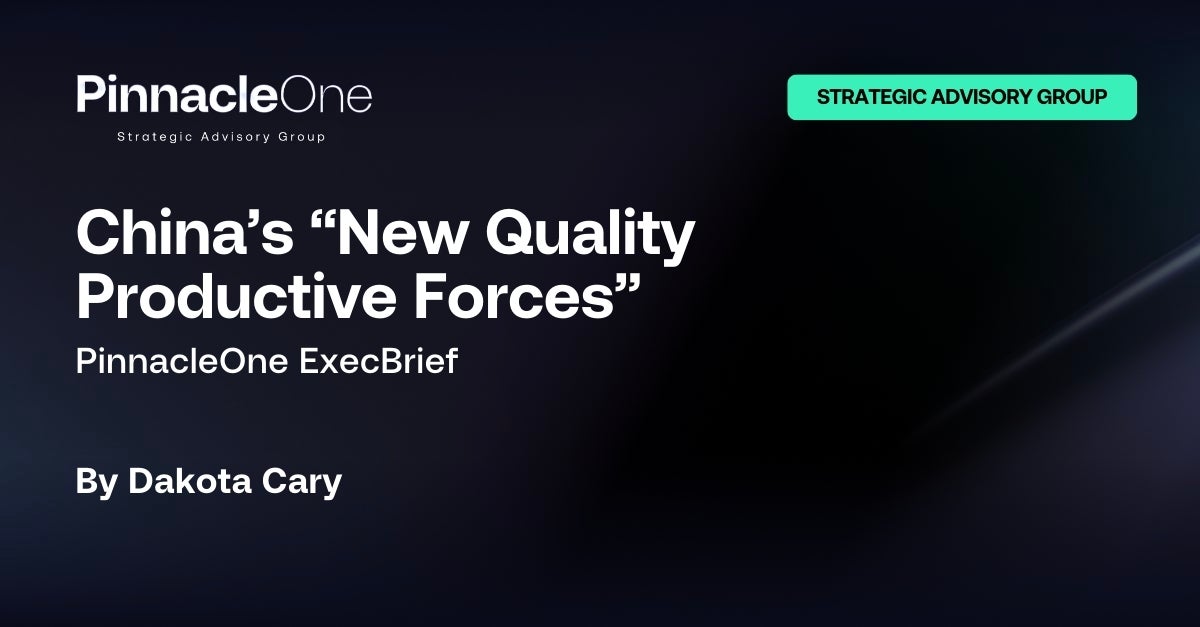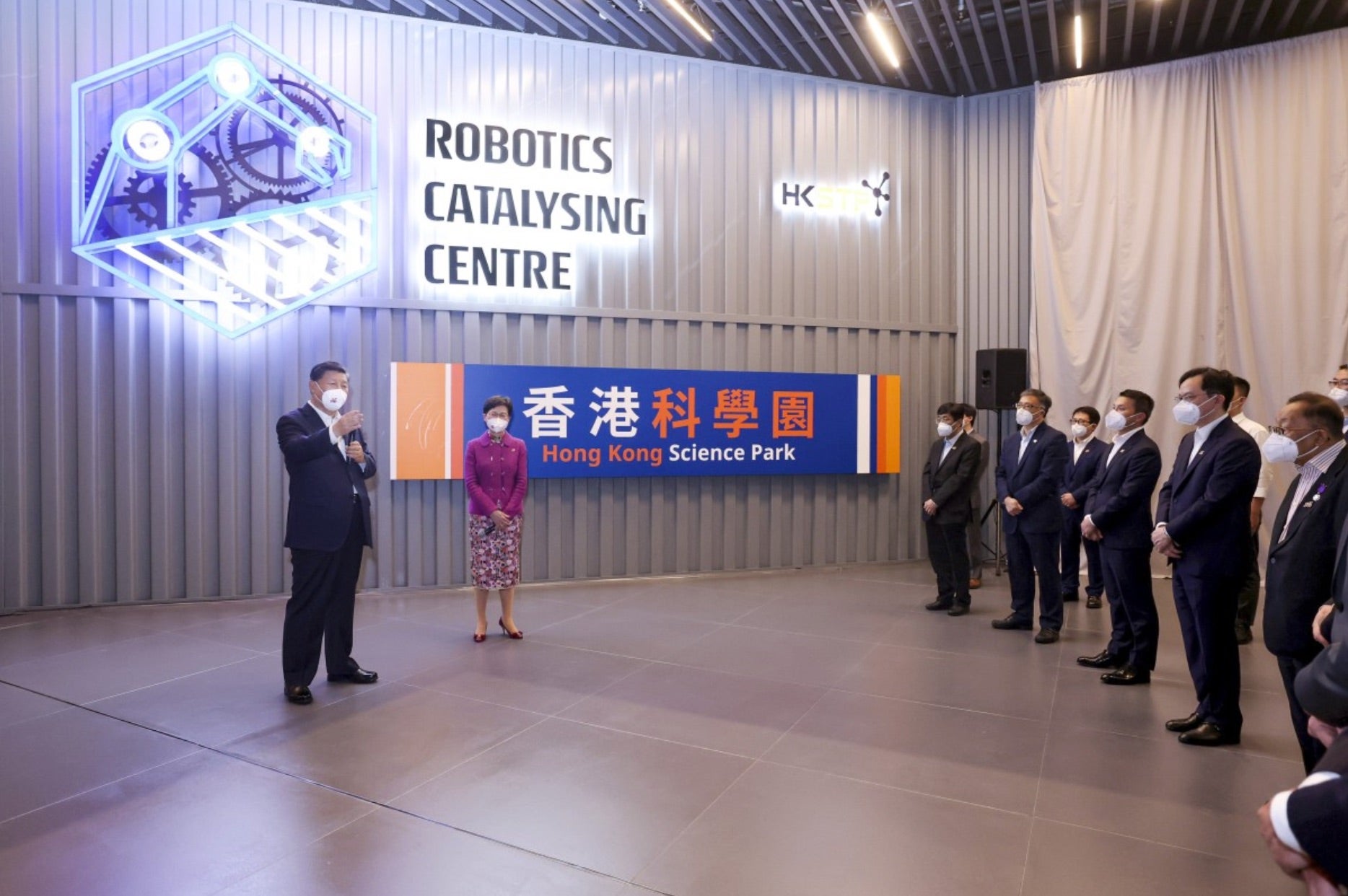Last week, PinnacleOne examined how China’s strategy for evading semiconductor technology controls is driving an increased insider threat issue for leading western enterprises.
This week, we highlight how a new turn of phrase by China’s leader will spark efforts across the country to make scientific breakthroughs occur out of thin air (or steal them from the west).
Please subscribe to read future issues — and forward this newsletter to interested colleagues.
Contact us directly with any comments or questions: [email protected]

Insight Focus | “New Quality Productive Forces”
Marxism and Factors of Production
The Chinese Communist Party (CCP) uses Marxism as its guiding ideology. Marx and Engles defined factors of production – the inputs used to create and derive economic value – as labor and capital. Marxist scholars argue over the precise description of these inputs and their definitions.
But, Marxist ideology is a living thing in China, shaped by the ideological contributions of the country’s leaders. It was Deng Xiaoping, China’s paramount leader after Mao Zedong’s death, who added “science and technology” to China’s original three factors on production in the 1980s. So, by the time Xi Jinping came into power in 2013, the CCP’s chief ideological bodies had maintained 4 factors of production for the preceding three decades: land, labor, capital, and science and technology.
When Xi Jinping joined the league of PRC leaders who contributed to Marxist ideology in 2018, he pushed the National People’s Congress to include language on “Xi Jinping Thought on Socialism with Chinese Characteristics” to the Party’s constitution. In 2022, Xi added the fifth factor of production to China’s interpretation of Marxist ideology: data. Since then, the CCP has launched many ideological publications to put scaffolding around the idea that data is an input to economic development.
In the same way that Deng’s addition of Science and Technology (S&T) as the fourth productive force led to massive spending on S&T projects by the state, so too has Xi’s addition of data as the fifth productive force led to changes in data export controls, new data trading zones, and leaked into other areas of policy making.
New Quality Productive Forces
Enter “New Quality Productive Forces,” a now totally separate ideological space for the CCP, introduced by Xi in January of this year. Different from tangible technology development plans, such as Made-In-China 2025, this idea frames the way S&T impacts society and economic development. It is an ideological phrase that underpins the design of future science and technology development plans. As with other parts of Communist ideology, it remains to be adequately defined, but many are trying.
State media states that New Quality Productive Forces “encompass high-tech, efficient, and high-quality productivity methods” and cites examples of AI, blockchain, quantum technologies, and life sciences. Quotes from Xi Jinping in this month’s publication of the Party’s chief ideological journal state that New Quality Productive Forces include revolutionary scientific breakthroughs that fundamentally alter the current economic model (original: 摆脱传统经济增长方式) and focus on high-tech, high-efficiency, and high-quality goods.

Xi’s New Quality Productive Forces come at a time of growing economic hardships for the PRC. China’s population is aging and some demographers contend that the rate of its aging will preclude the economy from sustaining GDP growth near 4% again. China is now facing down the middle income trap. China expert Tanner Greer summarized Xi’s hopes to use science and technology to save China’s future as:
- Technology and scientific capabilities are the primary source of national power.
- At certain moments in history, S&T capabilities undergo disruptive revolutions where great leaps benefit first movers.
- We are in such a moment.
In the context of China’s aging population, addiction to property development, and mass youth unemployment, Xi’s implied theory for S&T revolution looks like copium.
Government ministries are already trying to fill in the ideological gaps. For example, a group of key government ministries released a document on future development goals coinciding with Xi’s first use of New Quality Productive Forces in January. The ministries highlight the future of manufacturing (smart manufacturing, laser precision, intelligent sensing), information technology (satellite internet, quantum communications), materials (high-quality carbon fibers, semiconductors), energy (nuclear fusion, renewables), space (deep sea mining, lunar exploration), and health (AI medicine, digital twins). The authors believe AI will help analysts target fast-growing scientific research clusters for development across all these domains. All of these sectors were presented in the context of supporting China’s 14th Five-Year Plan and Long-Range Objectives for 2035.
Brass Tax
In a cult of personality, sycophancy is rewarded, criticism is punished, and shortcomings are perceived to be the result of deviation from the leader’s obviously flawless plans. For the bureaucrats responsible for implementing Xi’s new ideological thoughts, the question becomes how to achieve what they think to be the best path forward in a politically safe manner. Attaching old initiatives and targeting efforts towards current research trends while paying lip-service to Xi’s new ideology is a likely path. Eventually, Xi may find that bureaucratic resistance to his excellent ideas are the problem and elevate more of his factional ideologues to positions of influence. In short, it may all be a terrible waste for the Chinese economy if Xi’s entire idea can be summarized as “gambling the economy on moonshots.”
Bureaucrats will do their best to fight back and industry will get sucked in along the way. For global companies, the promise of technology saving China from the middle income trap will motivate IP theft, tech transfer, and talent poaching like never before. If Xi truly believes that such S&T advancements confer first-mover advantages, and that such technologies help define which nation is the world’s uncontested leader, then the bureaucracy he is able to wield will move heaven and earth to make sure China is that first mover. Given the state of China’s prospective long-term economic growth challenges, the state is very motivated to ensure China comes out on top.


